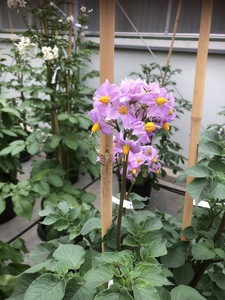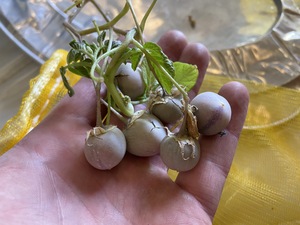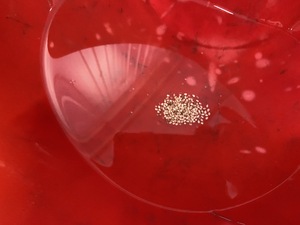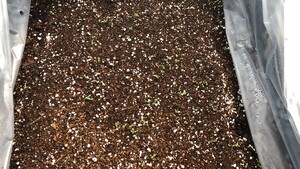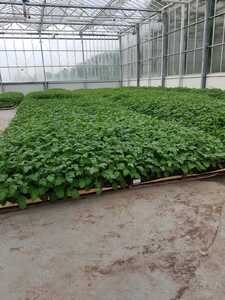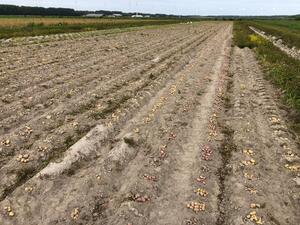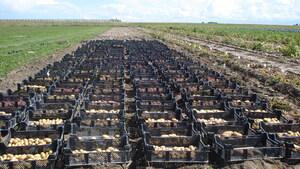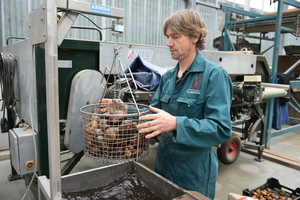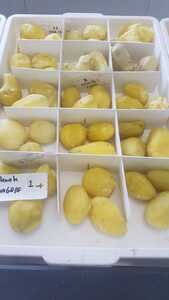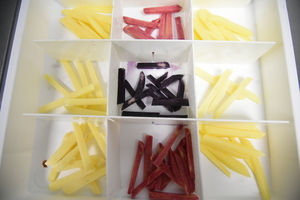Our philosophy in variety development
During its short existence, Plantera has created a wide range of varieties, seedlings and genitors. Starting exclusively with varieties and seedlings for the retail market, we now are represented more broadly in the industry with varieties and further developed seedlings in many more markets, such as crisps, French fries, export and starch. Through careful cross-breeding and selecting we aim at improving the potato's tolerance and resistance against biotic and abiotic stress factors, resilience in harvesting and storage and high net yields per hectare.
The process throughout the year
Selection and preliminary research
The search for the right genetic material goes on all year round and for this, we use various techniques and criteria:
- The basis for research in any particular year will be formed on the results of the previous years' analysis and decides which varieties we develop further and which ones are discarded. In addition, we also explore new cross breeds based on our study and research.
- We follow developments in the market and investigate what interesting new varieties with improved characteristics are being introduced. We judge if this combination of characteristics could add value to our potato breeding gene pool.
- We visit trial fields all over the world, preferably with the customer. This offers us good insight and market information. Therefore, trial shipments with the most promising seedlings to our customers are essential.
- The basis of breeding is a long process. In order to address late blight resistance, we have teamed up with the Bio-impulse project. In this project, we integrated resistant genes from related species of a commonly known potato. The subsequent seedlings, clones and genitors are available for crossbreeding and selection.
- Some seedlings in the screening fields may not be directly 'variety worthy', but could possess a particular exceptional characteristic, and so, it is important to recognise this and use it as a genitor for further breeding.
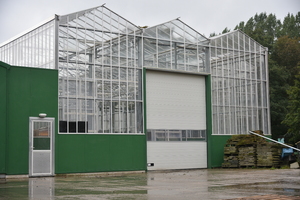
Crossbreeding
During the preliminary research it is decided which genitors are selected for crossbreeding. This seclection is based on the characteristics of the parents, in the hope that the favourable characteristics come together inside the new seedlings. During the whole process, we carefully monitor what parents are used, for both tubers and crossbreeds.
1. Breed plants are planted in the glasshouse until they flower.
For each pot, one potato is selected and planted on a block. This makes it easier to remove new tubers, allowing all the plant's resources to be directed to the plant and flowers.
2. Crossbreeding
When the flowers of both potential parents are in bloom, they are crossbred. The pollen of the stamens of the father is removed and caught. The pistil of the mother flower is then dipped into it. This is repeated with various flowers in the bunch, to sufficiently fertilize the flowers and produce sufficient berries and seeds.
3. Development of the berries
Any remaining flowers are discarded and when berries start to form, a small bag is put around the berries to keep them together.
4. Harvesting the berries
After around 6 weeks the berries can be harvested by cutting the bunch and checking the quality of the berries.
5. Harvesting seeds
The berries are squeezed, the juices and skin removed and the seeds are rinsed clean. Afterwards, the seeds are dried and can be stored in refrigeration for years.
